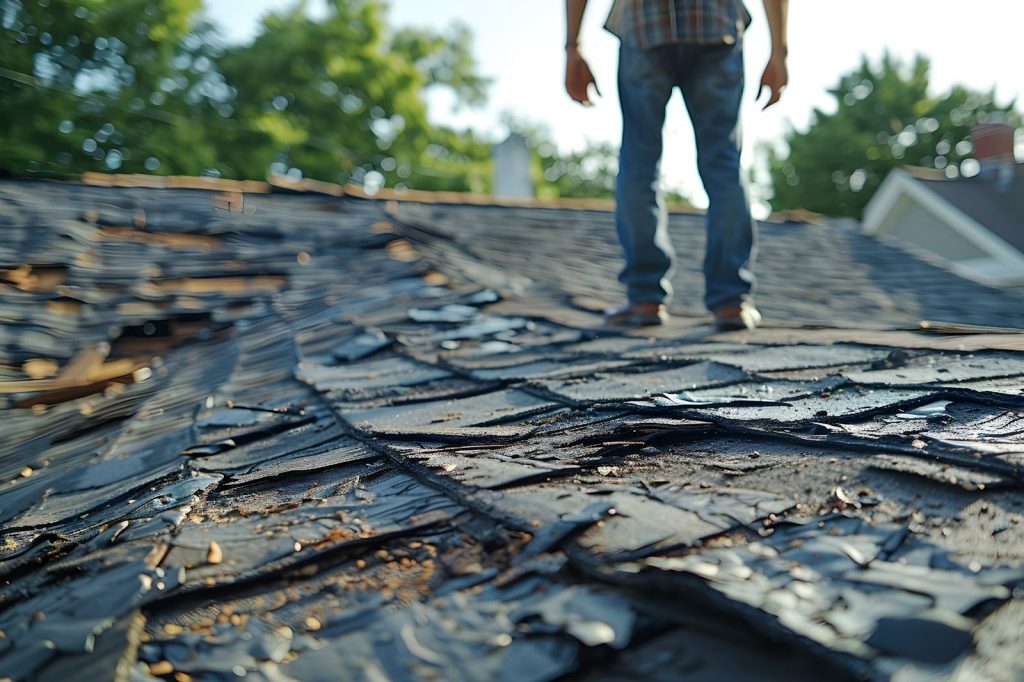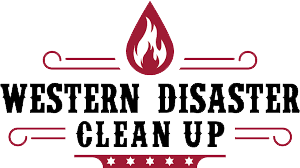When extreme weather hits, don’t let it take you by surprise— the last thing you want to deal with is storm damage when a lot of it is easily avoidable!
To prevent many of these problems, the best thing you can do before a storm is prepare. When considering emergency preparedness, natural disasters like earthquakes, fires, or tornadoes probably come to mind. But did you know that a strong windstorm or thunderstorm can be equally as problematic?
The unfortunate reality of these storms is that they often lead to a domino effect of even more severe damage. For example, a tree branch falls due to a massive gust of wind on your roof, removing shingles and creating a hole in its path. This small leak could lead to bigger, more serious issues like a mold infestation and even water or structural damage if not handled promptly.
While some of these effects and the aftermath of a storm are unavoidable, there are proactive steps that you should take to prevent some of these problems. If you are ready to prepare for the next oncoming storm, today’s article will fill you in on all the steps you need to take to ensure you are ready.
Keep scrolling to learn more.
Preparing for an oncoming storm
In the wise words of Benjamin Franklin, “By failing to prepare, you are preparing to fail. Preparation is the best way to minimize property damage and ensure your safety in the event of extreme weather. Effective storm preparation includes the following various essential steps before a storm is even on the forecast:
STEP 1 — Create a family plan
We have all experienced a storm that wipes out power, and sometimes extreme weather can affect cell phone service and landlines. This obviously makes communicating with loved ones and authorities quite difficult. But if you establish a family communication plan beforehand, everyone will know what to do in the event of a storm.
Depending on the type and severity of the storm, evacuation may be necessary. Creating an evacuation plan well before a storm hits may be the difference between your family being safe and not. Of course, your local government officials will give evacuation instructions, but having a plan for your own family is essential. Once your plan is in place, practice it and recite it with your loved ones regularly.
A family disaster plan includes designating a safe room in your home as a meeting place. In the event your home is not safe, you’ll want to select a meeting point outside of the house (a neighbor or family member’s house close by) at which you could meet.
Make sure to decide what to do if one of you cannot reach this determined area.
Chances are, you will not need this plan, but in the event you do, you’ll be thankful it is in place.
STEP 2 — Keep non-perishables items and essentials on hand
The instant extreme weather warnings are issued, people in the area flock to the neighborhood grocery stores, and the shelves quickly become empty. As much as you are able before a warning occurs, gather all the emergency supplies and essentials you need — ideally, keeping them on hand.
This list includes:
- Bottled water
- Non-perishable food and snacks
- Pet food
- Candles and matches
- Flashlights, lanterns, and batteries
- Hand-crank or battery-powered radio
- Medicine, including prescriptions and over-the-counter essentials
- Diapers, wipes, formula bottles, and any other baby items
- First aid kit
STEP 3 — Build an emergency go kit
Similar to keeping your essential supplies on hand, it is wise to keep a kit of these emergency supplies in easy-to-access bags to quickly grab in case you need to leave your home. These kits often include all the items you might need and will get you by for 72-hours or more.
An emergency kit usually includes:
- Water bottles
- Non-perishable food
- Medication, such as prescriptions, pain relievers, and allergy tablets
- Battery-powered or hand crank radio
- Portable batteries and charging cords for cell phones
- Flashlights and extra batteries
- Stocked first-aid kit
- A whistle or similar item to call for help
- Emergency blanket
- Plastic sheeting and duct tape to make a temporary shelter
- Pocket knife and other small tools, like pliers and wrenches
- Manual can opener
- Feminine products
- Kids’ activities
- Pet food
- Local maps
- Copies of important documents, such as birth certificates, driver’s licenses, insurance information, etc.
- Important phone number lists, like family members, neighbors, doctors, insurance, and a trusted disaster cleanup company

STEP 4 — Prepare your property
If you know a storm is coming, you must do what you can to ensure your home can function at its best. This includes preparing the outside of your home the best you can. Here are a few things you can do to prep your property:
- Gutter maintenance and repair — During a storm, you will want your gutter system to work as effectively and efficiently as possible, so make sure your gutters are clear and capable of moving and redirecting rain. This means removing leaves, twigs, pine needles, animal nests, and any other buildup that could impede water from moving.
Whether you call in some pros or take a few hours for a DIY job, removing the accumulated junk before an oncoming storm is necessary so that the heavy rainfall can flow freely through. Moreover, you’ll want to conduct a system inspection to ensure that it is still securely attached to your house, that there are no leaks, and that it drains away from your home’s foundation. - Prune trees and other shrubs — Nothing prunes a tree like an intense storm. If you want to avoid a branch falling on your car, roof, power line, or a loved one, resulting in serious issues, it’s best to prune them yourself before the storm hits.
- Button down the hatches — When extreme weather is looming, walk around your property and button down the hatches. This includes storing patio furniture, grills, planters, and other yard fixtures, securing your trampoline and playground, putting toys away, securing storm windows or shutters, moving vehicles to covered spaces, and more.
In a bad storm, these items could become dangerous projectiles and could cause damage to your home. They could also fly away in a gust of wind, never to be seen again. - Ready your sump pump — If your home has a sump pump, make sure you test it out to ensure it works and is clean. You may want to consider adding a battery-powered backup sump pump to keep things moving if your power goes out.
STEP 5 — Stay tuned in to local news and weather forecasts
Staying tuned in to your local news and weather forecasts will give you all of the information you need to stay in the know. However, if the oncoming storm is severe enough, there’s a high possibility that your power could go out.
To stay ahead of that, use a battery-powered or hand-crank radio so you can stay informed. You could also download a weather app to your phone to track the storm; make sure you have a portable phone charger so you don’t lose power. Select a weather app that provides real-time updates and warnings and crowd-sourced reports to pinpoint potential hazardous zones.
STEP 6 — Review your insurance policies
Before a storm hits, it’s crucial to thoroughly understand your insurance policies and ensure you have the right coverage for your property and belongings.
It’s wise to know exactly what your policies cover and do not cover. Most standard homeowner’s policies do not cover flood or earthquake damage. Some coastal areas do not cover windstorm and hail damage either.
If you feel like you need earthquake or flood insurance, you need to purchase separate policies for coverage. Note that some policies need to be in place for a certain amount of time before coverage takes effect.
STEP 7 — Complete a home inventory
The purpose of a home inventory is to document everything you own to help your insurance company evaluate any losses. In the event of a storm, it is good to have documentation of your property before any damage occurs to help the claims process go more smoothly.
To complete your home inventory:
- Go to each room and section of your outdoor property and write down the brand name and description of your items. Some people opt to take photos or video footage of their belongings to document what they own.
- If you remember when you bought it and how much you paid for it. Show serial numbers on items if you can.
- Compile receipts from any of your purchases.
- Don’t forget closets, garages, and storage units.
- Upload this documentation to your computer or cloud storage.

Western Disaster Clean Up is the storm cleanup company for you!
If you’ve been affected by a severe storm and now need a restoration specialist to mitigate your storm damage, contact the professionals at Western Disaster Clean Up.
Extreme weather could cause many problems to your property, such as water damage, mold issues, sewage backups, and more. If not addressed in a timely manner, these issues could result in foul odors, structural rot, and safety and health hazards. Timely treatment and prompt action are necessary to avoid serious long-term headaches, and the trusted Western Disaster Clean Up team is here for you.
Our knowledgeable and skilled team has handled thousands of business and home disasters, such as smoke and fire damage, mold remediation, toxic cleanups, flood repair, and more. When your property is affected by one of these disasters or something else, it’s essential to have a team you trust, and that has the experience, equipment, and knowledge to restore it completely.
The Western Disaster Clean Up crew is here to make your life easier, which is why we are available 24/7 for emergency services and will work in collaboration with your insurance company to ensure you make the most of your policy. We prioritize high-quality customer service and work, making timely responses and superior results something to expect when you work with us.
Find our team all along the Wasatch Front and Back and service areas like Salt Lake City, Holladay, West Jordan, Park City, Provo, and many other surrounding areas. Contact Western Disaster Clean Up to learn more.

